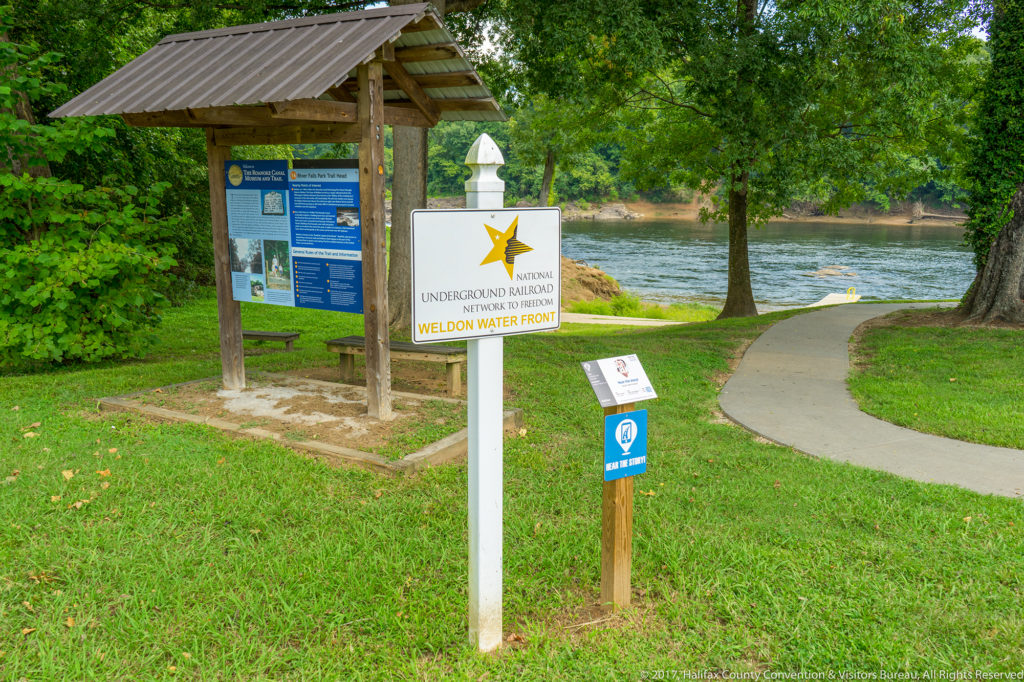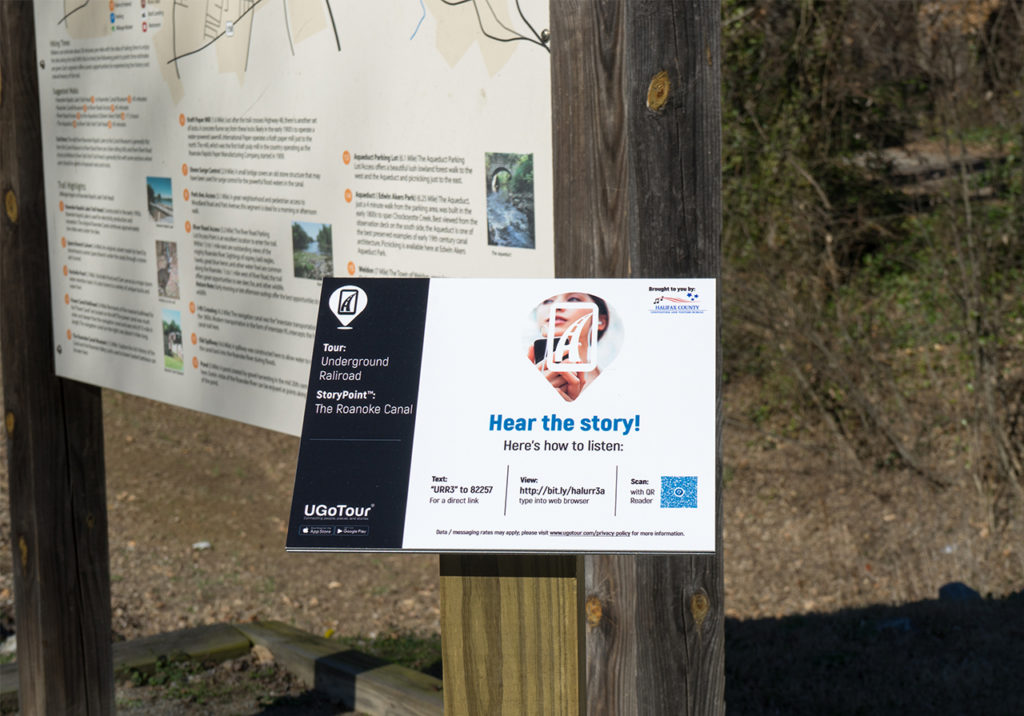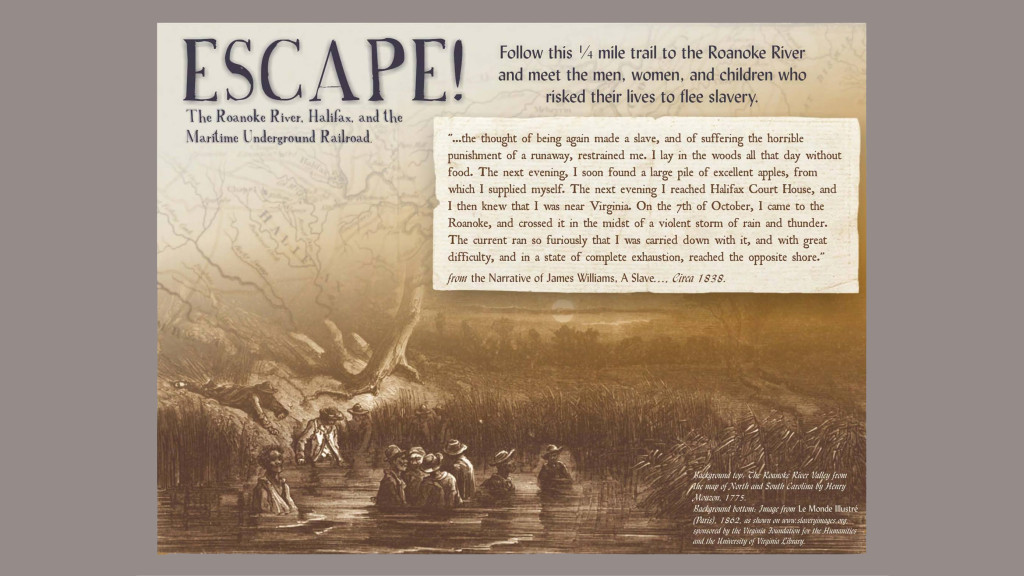The Roanoke Canal, Roanoke River, and Historic Halifax were all part of the Underground Railroad’s complex transportation network. Freedom Seekers would use the owing rapids and steep banks of the Roanoke River to elude their pursuers. The Roanoke Navigation Canal’s location near the river and Halifax also made it an integral part of the escape routes; slaves sometimes even escaped from the canal building camps. When Freedom Seekers reached the town of Halifax, the large community of free blacks often concealed those seeking freedom or helped them on their way further north. In 1838, freed slave James William spoke of his perilous journey. “…the thought of being again made a slave, and of suffering the horrible punishment of a runaway, restrained me. I lay in the woods all that day without food. The next evening, I soon found a pile of excellent apples, from which I supplied myself. The next evening I reached Halifax Court House, and I then knew that I was near Virginia. On the 7th of October, I came to the Roanoke, and crossed it in the midst of a violent storm of rain and thunder. The current ran so furiously that I was carried down with it, and with great difficulty, and in a state of complete exhaustion, reached the opposite shore.”


